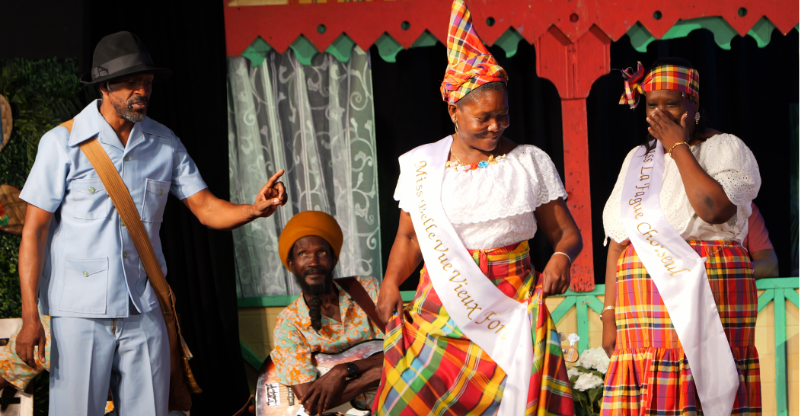The concept of geographical authenticity in cultural products has gained global recognition, with examples like tequila from Mexico, champagne from France, and now Kente cloth from Ghana. In October, Ghana’s Geographical Indications Act officially classified Kente cloth as a product of specific regions like Agotime and Adanwomase, safeguarding its authenticity and value. This development has sparked a broader conversation about cultural identity and authenticity in fashion, particularly in Saint Lucia, where national and Creole wear reflect a complex history of cultural blending. Across the Caribbean and the Americas, fabrics and garments often serve as cultural emblems, tracing their origins to centuries of interwoven identities. In Saint Lucia, Madras—a colorful, checkered fabric originating from Chennai, India—has become dominant, though floral cotton prints were once the fabric of choice. Designer and cultural advocate Sean Greaves notes that floral material was historically associated with the Wòb Dwiyèt, worn by the less affluent, while French brocade, imported from French Guiana, signified wealth. Madras, initially used for hair ties, gradually became central to Saint Lucian attire. The evolution of national costumes in the French Caribbean, including the douillette and chemise-jupe, reflects a blend of African, Asian, East Indian, European, and Indigenous American influences. Saint Lucia inherited these styles, with the chemise-jupe evolving into the Madras-based national dress. Greaves attributes the shift to Madras’s accessibility, as most fabrics are imported from Trinidad and Tobago. Unlike Ghana’s Kente, which remains rooted in its origin, Saint Lucia’s national wear embodies a layered history shaped by the transatlantic slave trade and indentured labor. Entrepreneur Anselm Mathurin’s Calabash Wear print, showcased at New York Fashion Week, highlights the ongoing quest for a distinctly Saint Lucian identity. The question remains: Is authenticity about origin, or the reinvention of historical legacies?
